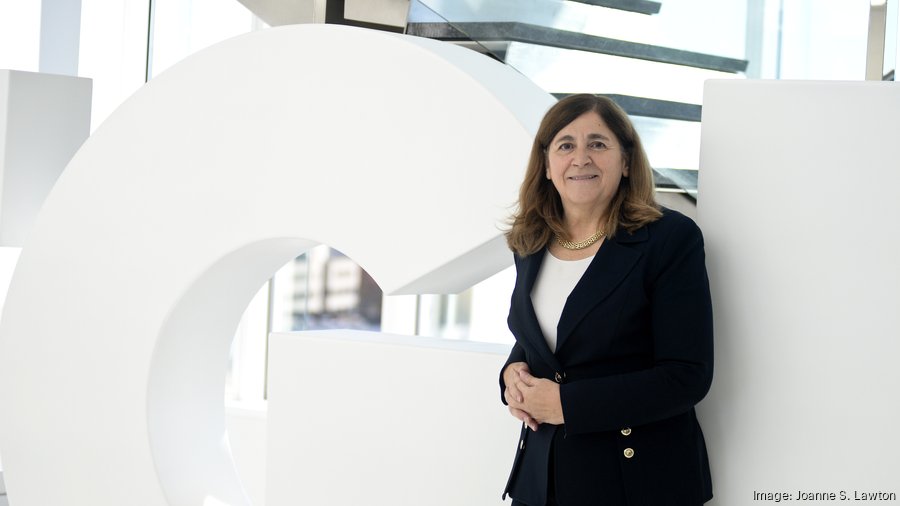As corporate America grapples with the need for more gender diversity in its boardrooms, Greater Washington can give itself a pat on the back.
Only seven of the Washington region's 50 largest publicly traded companies have all-male boards, according to Securities and Exchange Commission filings. And of the 43 public companies whose boards do have female representation — from General Dynamics Corp. (NYSE: GD) to Graham Holdings Co. (NYSE: GHC) to United Therapeutics Corp. (NASDAQ: UTHR) to NeuStar Inc. (NYSE: NSR) — 31 have more than one. Counting all 478 board members of the 50 companies, nearly 20 percent are women.
Tegna Inc. (NYSE: TGNA), a McLean-based media company helmed by retiring CEO Gracia Martore, has the most female board members — six in all, making up more than half of the now 11-person board. Its sixth female member was added last year after Tegna’s most recent filing, according to the company, which reached out to the Washington Business Journal with this updated information.
Nationally, only about half of Fortune 1000 companies included in a gender diversity index by the 2020 Women on Boards campaign, which aims to get female board representation to 20 percent by 2020, had that level of female directors on board.
“The fact that we have so many, that’s actually much higher than the national average right now,” said Rajshree Agarwal, director of the Ed Snider Center for Enterprise and Markets at the University of Maryland’s Robert H. Smith School of Business. “And that bodes well for the D.C. area.”
Related: Click on the gallery above to see the companies that have the most and fewest women on their boards. Below, search for companies with female board members.
Andrew Sherman, an adjunct professor at the Smith School of Business, agrees that the Washington region is “definitely above the norm.”
“The D.C. area — in government, company leadership, not-for-profits, media — has embraced the role of women and minorities in leadership and governance positions,” Sherman said. But, he added, “I still think there’s a lot of work to do.”
Females are still generally in the minority on company boards. About one in seven board members in the D.C. region is a woman, and females make up about 14 percent of board members at 204 publicly traded companies based in the District, Virginia and Maryland, according to a November study from the American University Kogod School of Business.
Nationally, one out of every four Russell 3000 companies is comprised of only men, and for a majority of those companies, fewer than 15 percent of directors are female, according to State Street Global Advisors. The Boston-based hedge fund issued a call to action Tuesday for its more than 3,500 portfolio companies to increase the number of women on their corporate boards. State Street drove home its message by putting a statue of a young girl near Wall Street in New York City.
State Street's decree came ahead of International Women’s Day Wednesday, when a number of women’s organizations also observed A Day Without A Woman and women stayed home from work to demonstrate the female gender's economic impact — similarly to those who participated in February’s A Day Without Immigrants protests.
In addition to other national efforts, local groups have also worked over the years to provide training and promote more women in board roles and other corporate leadership positions.
George Washington University had teamed up with the International Women's Forum back in 2012 to create an executive leadership training program, which, with support from Rand Construction Corp. CEO Linda Rabbitt, set out to prepare more women to serve on the public company boards. A partnership between George Mason University and nonprofit Washington Women's Leadership Initiative recently launched to prepare more female senior-level executives to serve as board directors. And Falls Church-based Women in Technology, which has about 1,000 local members, has offered leadership development, education and mentoring to advance women to the boardroom.
“Boards should be a reflection of the markets and the ecosystems that they serve because it makes good business sense,” Sherman said. “It’s a smart business thing to do. It’s not just about an SEC initiative or a regulatory initiative.”
In the gallery above, we put a spotlight on the largest public companies headquartered in the D.C. area with both the most women on their boards (five companies with four to five female members, some also led by women CEOs) and the least (seven companies with none). We don’t include those with three or fewer, so if you don’t see Northrop Grumman Corp., Capital One Financial Corp., The Advisory Board Co. and others, not to worry: You can find all of them in the searchable database below.









